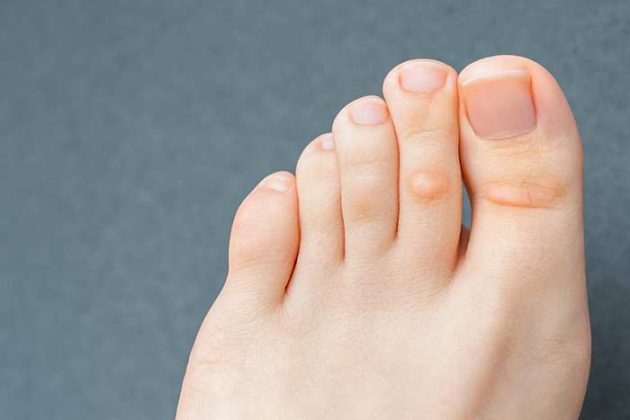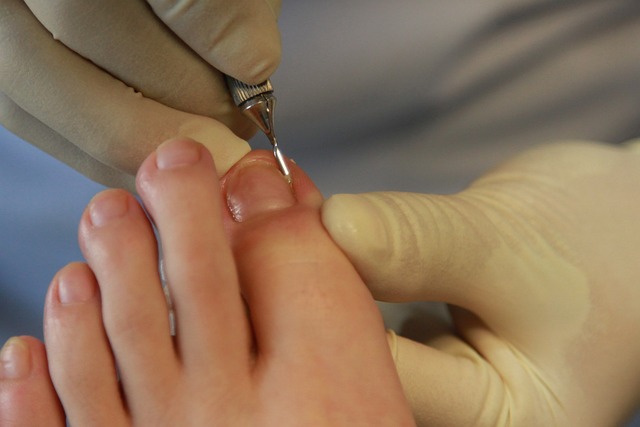How to Manage Swollen Feet with Diabetes
Living with diabetes can lead to various complications, and one common issue many people face is swollen feet. This condition, often caused by poor circulation or fluid retention, can become a daily challenge, making it difficult to stay active or even find comfortable footwear. For those with diabetes, swollen feet aren’t just uncomfortable—they can signal more serious underlying problems.
Why It Happens
Swelling, also known as edema, can occur for several reasons in people with diabetes. One of the main causes is poor circulation, which reduces blood flow to the feet, leading to fluid build-up. Additionally, nerve damage, known as diabetic neuropathy, may reduce the body’s ability to recognise and respond to pain or injury, allowing swelling to go unchecked. Fluid retention is another culprit, especially if kidney function is compromised, a common complication in people with diabetes.
What You’ll Learn
In this blog post, we’ll focus on practical, actionable tips you can try at home to reduce and manage swollen feet. From elevating your legs to wearing compression stockings and making simple lifestyle changes, these solutions can help ease discomfort and improve circulation without requiring medical treatments.
Elevating Your Feet to Reduce Swelling
One of the simplest yet most effective ways to manage swollen feet is to elevate them above your heart level. This encourages blood flow back toward the heart and reduces fluid build-up in your lower extremities, a key cause of swelling. For people with diabetes, proper circulation is crucial in preventing complications, and elevating your feet can help ease discomfort and swelling.
Why It Works
When you elevate your feet above heart level, gravity helps pull the excess fluid away from your legs and feet, reducing swelling. For those with diabetes, this simple action can have a significant impact on managing circulation and preventing fluid retention, especially if poor circulation is a concern.
How to Do It:
Elevating your feet is easy and can be done while sitting or lying down:
- Use Pillows: Place a few pillows under your feet while lying down to ensure they are higher than your heart.
- Sit Comfortably: When sitting, prop your feet up on a footrest or use cushions to keep them elevated.
- Adjust Your Chair: If you’re at work or sitting for long periods, try to adjust your chair or desk setup to give your feet more support.

Aim to elevate your feet for 15-20 minutes every few hours throughout the day to help reduce swelling and improve circulation.
Using Compression Stockings for Swollen Feet
Compression stockings are a great option for managing swollen feet, particularly for those with diabetes. These special socks apply gentle pressure to your legs, helping to improve blood flow and reduce the build-up of excess fluid, a common cause of swelling.
How Compression Stockings Help
Compression stockings work by applying pressure to the lower legs, which helps blood vessels work more efficiently. This encourages better circulation, reduces fluid retention, and helps prevent swelling from getting worse. For people managing both diabetes and swollen feet, these stockings can be a simple, effective solution.
Choosing the Right Fit:
Getting the correct fit is essential for compression stockings to work effectively. Here are some tips for selecting the right pair:
- Measure Your Legs: Compression socks come in different levels of tightness (measured in mmHg). Consult with a healthcare professional to determine the best level of compression for your needs.
- Comfort Matters: Ensure the stockings are snug but not too tight. Ill-fitting socks can cause discomfort and may restrict circulation, which is counterproductive.
- Look for Breathable Fabrics: Diabetics should choose socks made of breathable materials to prevent moisture build-up and reduce the risk of infection.
When to Wear Them
For the best results, wear compression stockings throughout the day, especially if you are on your feet for long periods or sitting for extended durations. Remove them at night or when lying down, as they are designed for use when you’re upright and active.
Lifestyle Changes to Manage Swollen Feet
Small lifestyle changes can make a big difference in reducing swelling in your feet, particularly for those managing diabetes. Incorporating regular movement and staying hydrated are two key ways to improve circulation and reduce fluid retention.
The Importance of Movement
Staying active is crucial in managing swollen feet, especially for those with diabetes. Regular movement, even light activity, encourages blood flow and helps prevent fluid from pooling in your lower limbs. Exercise improves circulation, which is essential for reducing swelling and maintaining overall foot health.

If mobility is a concern, here are some low-impact exercises you can try to keep your feet moving without over-exertion:
- Walking: A short walk every day can go a long way in improving circulation. Try to walk for 15-30 minutes at a time, even if it’s just around your home or neighbourhood.
- Seated Exercises: For those with mobility issues, seated exercises can be a great alternative. Try lifting your legs up and down while seated, or rotate your ankles in circles to keep blood moving.
How Hydration Helps
Staying properly hydrated is often overlooked but plays a vital role in managing swelling. When your body is dehydrated, it holds onto excess water, leading to more fluid retention in your legs and feet. By drinking enough water, you help flush out excess salt and fluids that contribute to swelling.
- Carry a Water Bottle: Keep a reusable water bottle with you at all times to remind yourself to drink water regularly.
- Set Hydration Reminders: Use a phone app or set alarms to remind yourself to drink water at regular intervals.
- Add Flavour: If plain water feels boring, add a slice of lemon or cucumber to make it more refreshing.
Incorporating these lifestyle changes can greatly reduce the discomfort of swollen feet and contribute to better overall foot health.
Diet Adjustments for Better Circulation
Diet plays a crucial role in managing swollen feet, especially for people with diabetes. By making small adjustments to your eating habits, you can improve circulation, reduce fluid retention, and minimise swelling.
Watch Your Salt Intake: How Salt Affects Swelling:
Consuming too much salt can cause your body to retain water, leading to increased swelling in your feet and legs. For people with diabetes, managing sodium intake is even more important, as excess fluid retention can put additional strain on circulation and overall health.
Tips to Reduce Sodium in Your Diet:
- Check Labels: Many processed and packaged foods contain hidden salts. Look for low-sodium options or cook fresh meals at home to control the amount of salt you consume.
- Use Herbs and Spices: Swap out salt for herbs, spices, and lemon juice to flavour your food without adding sodium.
- Avoid Processed Foods: Minimise consumption of processed meats, canned soups, and frozen meals, which are often high in sodium.
Anti-Inflammatory Foods
Incorporating anti-inflammatory foods into your diet can help improve circulation and reduce swelling. These foods are rich in antioxidants, vitamins, and minerals that support overall vascular health.
Recommended Anti-Inflammatory Foods:
- Leafy Greens: Spinach, kale, and other leafy greens are packed with nutrients that promote circulation.
- Berries: Blueberries, strawberries, and other berries are rich in antioxidants, helping to reduce inflammation and support healthy blood flow.
- Fatty Fish: Salmon and other fatty fish are high in omega-3 fatty acids, which reduce inflammation and support heart health.
Practical Meal Ideas
Here are a few simple meal or snack ideas that incorporate these circulation-boosting foods:
- Breakfast: A smoothie made with spinach, berries, and a splash of almond milk.
- Lunch: A salad with kale, grilled salmon, and a lemon vinaigrette.
- Snack: A handful of mixed berries or a small bowl of anti-inflammatory nuts like walnuts.
Avoid Tight Shoes and Socks
The type of footwear you choose can significantly impact the swelling in your feet, particularly for those managing diabetes. Tight shoes and socks can restrict circulation, making swelling worse and potentially causing discomfort or injury.
How Footwear Affects Swelling
When shoes or socks are too tight, they can constrict blood flow in your feet and ankles, leading to fluid retention and increased swelling. For people with diabetes, this can be especially dangerous, as poor circulation increases the risk of foot ulcers and other complications. Properly fitted shoes and socks are essential to maintaining healthy blood flow and preventing discomfort.
What to Wear:
Here are some tips for choosing footwear that supports circulation and keeps swelling in check:
- Choose Comfortable, Breathable Shoes: Look for shoes that provide plenty of room for your toes and have adjustable straps or laces to ensure a snug but not tight fit. Breathable materials like leather or mesh are ideal for promoting airflow and preventing moisture build-up.
- Opt for Diabetic Socks: Diabetic-friendly socks are designed with extra cushioning, minimal seams, and moisture-wicking fabric to keep feet dry and reduce friction. Look for socks that are non-restrictive at the top to avoid cutting off circulation.
- Consider Orthotics: Custom-made orthotics or insoles can provide additional support, improve circulation, and help reduce the pressure on your feet.
Check Regularly:
Make a habit of checking your feet daily for any signs of swelling, redness, irritation, or sores. This is particularly important for people with diabetes, as foot injuries can sometimes go unnoticed due to nerve damage. Early detection of swelling or other foot issues can help prevent more serious complications down the line.
When to Seek Professional Help
While most cases of swollen feet can be managed with lifestyle changes, there are times when professional help is necessary. For people with diabetes, it’s crucial to stay vigilant and recognise when swelling may be a sign of a more serious issue.
Recognising the Signs
Swelling that persists or worsens, especially when accompanied by other symptoms, could indicate a deeper problem. Be sure to consult a healthcare professional if you notice any of the following:
- Pain or Discomfort: If swelling is accompanied by pain, tenderness, or discomfort that doesn’t go away, it could be a sign of infection or poor circulation.
- Changes in Skin Colour or Temperature: Swelling that leads to red, blue, or pale skin, or that feels hot or cold to the touch, should be addressed immediately, as these could be signs of infection or poor blood flow.
- Sores or Ulcers: If swelling is causing blisters, sores, or ulcers on your feet, seek professional help immediately, especially if you have diabetes, as these can lead to serious complications.
Consult Your Podiatrist:
If the lifestyle changes outlined in this blog post don’t help reduce swelling, or if you experience any of the signs mentioned above, it’s important to consult a podiatrist. A podiatrist can assess your feet, recommend personalised treatments, and help manage any underlying issues related to your diabetes.
Book a consultation with a podiatrist today to manage your diabetic foot health.

Dr. Yasmin Karam
Dr. Yasmin Karam graduated with a Bachelor of Health Science/Masters in Podiatric Medicine. Dr. Yasmin has had experience working in both private and public sectors, exposing her to a great range of foot complications; from minor nail and skin pathologies to foot mal-alignments and diabetic foot ulcers.













